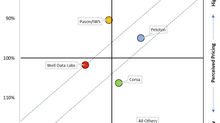Standardization, Automation and Artificial Intelligence to Shape the Future of Subsea Developments a
- David Bat

- Jul 2, 2018
- 2 min read
Standardization, automation and artificial intelligence will shape the future of subsea developments and operations. Continued improvements in equipment reliability and innovative design are also expected.
These findings and results are based on personal interviews with 102 subsea engineers and managers representing 46 unique operating companies who manage a total of 4,563 subsea wells worldwide and published in the Kimberlite 2018 Subsea Equipment & Services report.
The findings, however, vary by geographic region with the North Sea operators leading the way in the planned use and adoption of standardization and artificial intelligence followed by the Gulf of Mexico. Asia Pacific operators are most heavily relying on equipment design, reliability and other innovative improvements to improve operations and efficiency.
Subsea operators also report that improvements are most needed in the area of subsea equipment surveillance & monitoring and subsea control systems followed by subsea trees, umbilicals & flowlines and manifolds. More specifically, subsea operators cite the need to improve standardization of subsea trees, improve the reliability of subsea control systems, reduce the weight and footprint of subsea manifolds and improve predictive analytics for subsea equipment surveillance & monitoring.
These improvements in equipment design, standardization and predictive analytics are considered to be important in assisting operators to reach their goals of driving subsea finding & development cost for subsea developments to $40 per barrel or lower. Today, subsea operators are experiencing a wide range of economic outcomes requiring oil prices as low as $35 per barrel to justify subsea developments to over $70 per barrel.
The findings of the report reveal that E&P operators who can best differentiate supplier’s capabilities and offerings are able to experience the highest level of efficiency and economic outcomes.
With the Deepwater market expected to grow approximately 12% annually for next 3 years and concerns relating to availability, scheduling and increasing costs, it is more important than ever for E&P operators and subsea equipment and service suppliers to collaborate on standardized subsea solutions, optimize delivery & scheduling and reduce costs.













































Comments